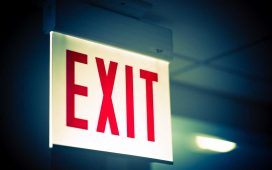
At the beginning of the summer, I saw a reaction video on Tiktok where two people who worked as product owners in IT talked about their jobs and what they do during the day. It would have been completely undramatic if it hadn’t been for the fact they were both working in the bright sun, in swimwear, in a pool, with their laptops on the edge of the pool.
The person who reacted to the clip was insane. “It’s people like you who ruin it for the rest of us,” he growled. “It’s stuff like this that forces us back to the offices.”
Recently, the debate about remote work and office presence has gained new momentum.
The above-mentioned video was posted around the same time there was talk of “quiet vacationing” — a new trend where younger employees in particular take furtive vacations to protect remote work. It’s just one in a series of similar “trends” that should probably be considered more as urban legends, but which nevertheless say something about the spirit of the times. This issue is starting to get hot again.
Ratio researcher Jonas Grafström recently made an appearance in Dagens Nyheter where he argued that working from home is equal to a salary increase of 10%. That, of course, immediately started discussions about differentiated pay between remote workers and those who work in the office. In short: are you prepared to accept a lower salary to work at home?
And just this past week, Amazon decided to call back employees five days a week — something eight out of 10 business leaders in KPMG’s global CEO survey believe will become the norm again within three years.
All this despite the fact that other surveys have shown that demands to return to the office do not bolster profitability, but instead create conflicts and risk scaring away workers with needed skills, especially women and younger people.
You don’t have to go to extreme cases to see where the conflict lies; they’re clearly laid out in the report on office work the Stockholm Chamber of Commerce released earlier this month. That report says, among other things, that a third of workers think managers want employees in the office more than they are. (Half of the employees say they agree with management on what applies, while fully 75% of the managers agree with the employees.)
Among the findings: 52% of employees say they are more productive when they work from home and 37% work more there than when they are in the office. At the same time, 39% of managers feel working in the office has “a positive impact on employees’ careers” compared to working at home. And 19%, i.e. one in five managers, say that salary is positively affected by office presence.
The effect is clear: an average employee wants to work three days a week in the office, while managers want them there four days. The managers win, of course: today half of all civil servants in Stockholm County work in the office four days a week, a clear increase.
There are different conclusions one can draw. Mine are these:
Physical workplaces and physical interaction are better than digital workspaces and meetings when it comes to creative tasks and social/cultural togetherness. I think, depending on what you work with, employees and managers are quite in agreement.
Leadership in the hybrid work models has not developed in the ways and at the pace required. Managers still have an excessive need for control, with no way to deal with this without trying to return to what was previously comfortable (and technical monitoring solutions are hardly the answer either).
Employees have probably not managed to convey to their bosses the positive aspects of home work — for the employer. It’s great that your life puzzle is easier and you can take power walks and do laundry, but how does that help the company? It’s no wonder that whispering about sneaky vacations is taking off.
And there’s an elephant in the room we should talk about — people really hate open office spaces and activity-based workplaces.
Forty-six percent of respondents in the Chamber of Commerce survey say permanent workplaces in the office have become more important to them in recent years, and 45% of those between the ages of 18 and 35 would come in more often if they had better opportunities for undisturbed work.
Researcher Christina Bodin Danielsson calls open office landscapes a “sea of slaves.”
“There is 20 years of research on how bad it is,” she tells Fastighetsnytt. “The research has clearly shown that cognitive ability drops by 30%.”
On top of that, there’s another aspect gnawing at me (and you’ll have to excuse me for getting a little dark). I think there is a driving force here that is psychological, almost existential, and which is not really about remote work per se, but which is manifested in that issue. Namely it’s our fear, as a society, to think about the pandemic.
The COVID-19 pandemic was only four years ago and it changed the world. And I’m not just talking about how “digitalization took enormous strides,” but about how we humans have changed. A whole generation has become adults in the shadow of the pandemic, and even those of us who were already adults were profoundly affected by changes that we now seem to prefer to ignore.
Increasingly, it feels like the pandemic didn’t happen, as if we’re actively erasing it from our collective memory. There is a kind of unprocessed trauma of a period that was so terrible and transformative that today we do our best to completely repress it all.
And the strong desire to go back to the way everything worked before, before the pandemic, is a symptom of this.
Maybe that larger issue is also something it’s time we talk more about.
This column is taken from CS Veckobrev, a personal newsletter with reading tips, link tips and analysis sent directly from editor-in-chief Marcus Jerräng’s desk. Do you also want the newsletter on Fridays? Sign up for a free subscription here.












